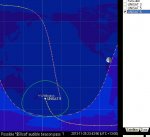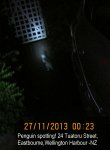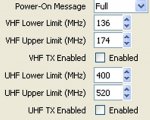CORRECTION I previously said spacetrack.org, but was wrong, it is space-track.org
If posting TLE or 3LE (TLE with satellite title line) can I advise enclosing it in CODE tags as browsers are likely to remove formatting spaces to single spaces. programmes that use TLEs depend on the placement of data within defined character fields in each line.
@Srnet, Are you still using a current "UNISAT 5" TLE for your tracking ( Norad catalogue 39421U )? Note that space-track defines it "UNISAT 5" whilst elsewhere "UNISAT-5" seems prevalent and if ever searching for birds with a hyphenated name, without any luck, then trying it spaced (or vice versa) may restore sanity . . .
I can recommend signing up as there is a lot of info to be had there.
I looked up the satcat (satellite catalogue) specifying launches on 2013-11-21 (21 November 2013) and then clicked on the NORAD catalogue number to sort it. It returned only nineteen objects, two of which were DEBRIS and a significant gap in the sequential catalogue numbers. As you have mentioned previously, size does matter . . . this may be down to reasons of National Security, inability to track due to size and a few other reasons. Given that neither EAGLE2 or more than a couple of birds involved in the launches on that date were anything to keep schtum about, then either they haven't been reliably tracked yet or may not be. Fingers crossed. That's why I harp on about the NORAD catalogue number so much, it's unique and definitive and unlikely to be mangled.
The hole in the NORAD sequence ( 39432 to 39447 ) indicates that there are packages under a security blanket or yet to produce reliable tracking data. The last items catalogued are the rocket body and debris. These last details are published once the number of items to be tracked has been ascertained by the sensor networks.
If posting TLE or 3LE (TLE with satellite title line) can I advise enclosing it in CODE tags as browsers are likely to remove formatting spaces to single spaces. programmes that use TLEs depend on the placement of data within defined character fields in each line.
@Srnet, Are you still using a current "UNISAT 5" TLE for your tracking ( Norad catalogue 39421U )? Note that space-track defines it "UNISAT 5" whilst elsewhere "UNISAT-5" seems prevalent and if ever searching for birds with a hyphenated name, without any luck, then trying it spaced (or vice versa) may restore sanity . . .
I can recommend signing up as there is a lot of info to be had there.
I looked up the satcat (satellite catalogue) specifying launches on 2013-11-21 (21 November 2013) and then clicked on the NORAD catalogue number to sort it. It returned only nineteen objects, two of which were DEBRIS and a significant gap in the sequential catalogue numbers. As you have mentioned previously, size does matter . . . this may be down to reasons of National Security, inability to track due to size and a few other reasons. Given that neither EAGLE2 or more than a couple of birds involved in the launches on that date were anything to keep schtum about, then either they haven't been reliably tracked yet or may not be. Fingers crossed. That's why I harp on about the NORAD catalogue number so much, it's unique and definitive and unlikely to be mangled.
The hole in the NORAD sequence ( 39432 to 39447 ) indicates that there are packages under a security blanket or yet to produce reliable tracking data. The last items catalogued are the rocket body and debris. These last details are published once the number of items to be tracked has been ascertained by the sensor networks.





